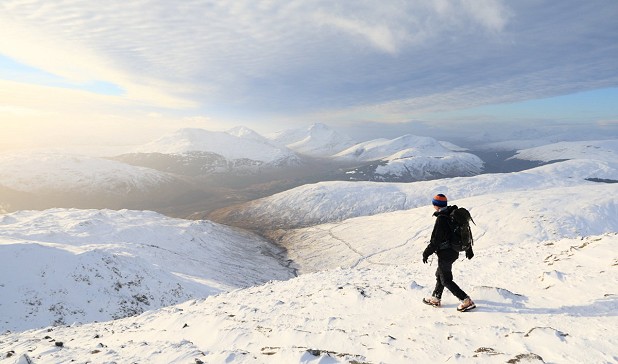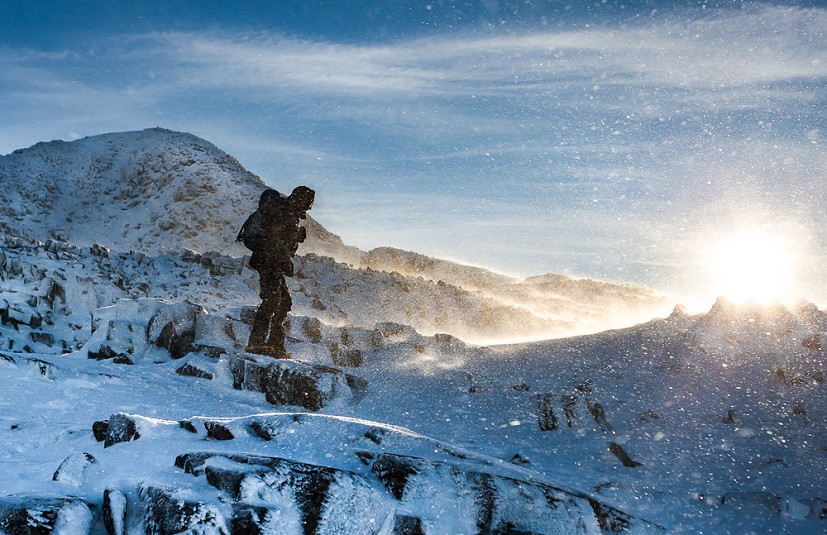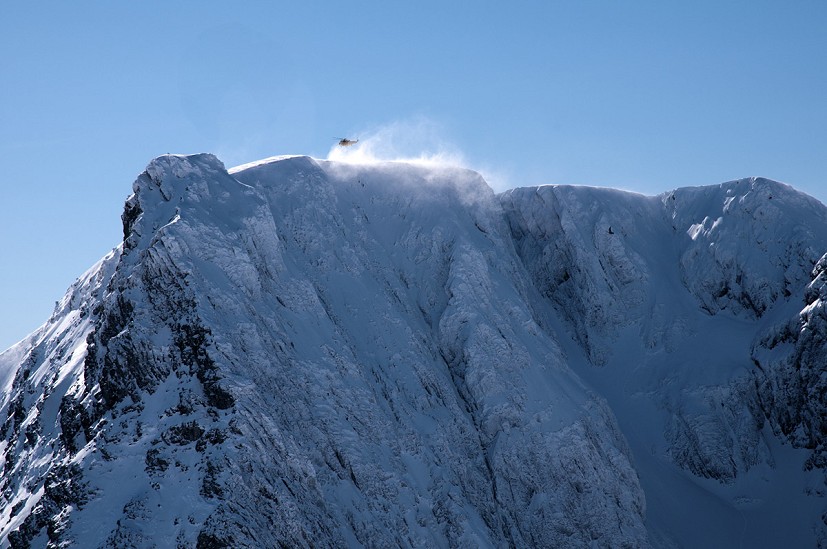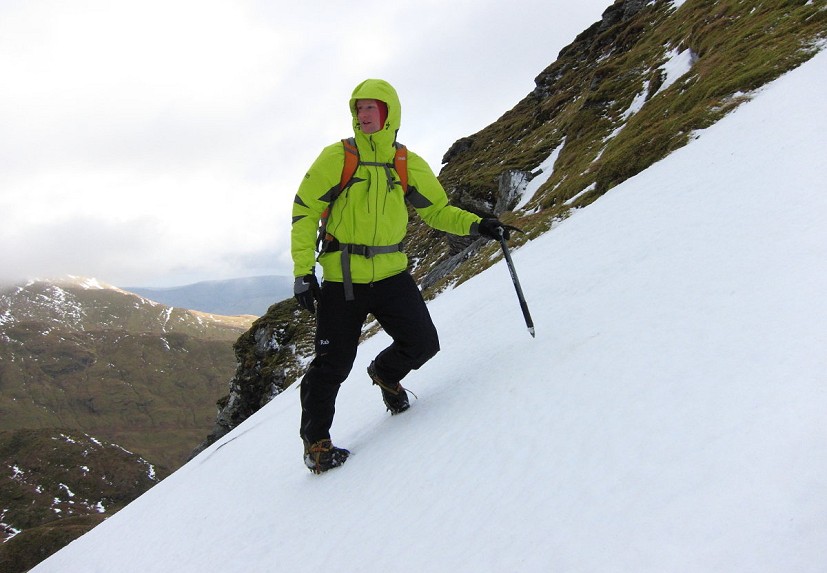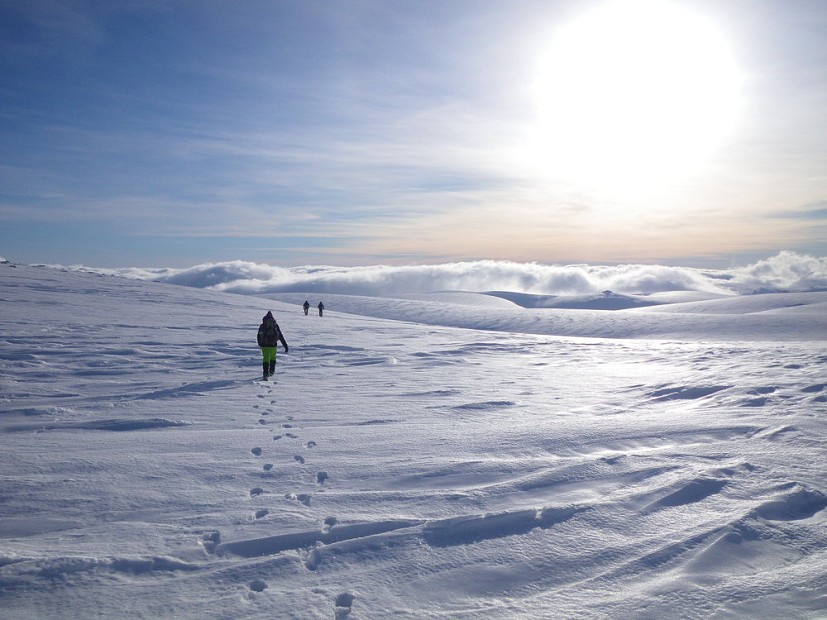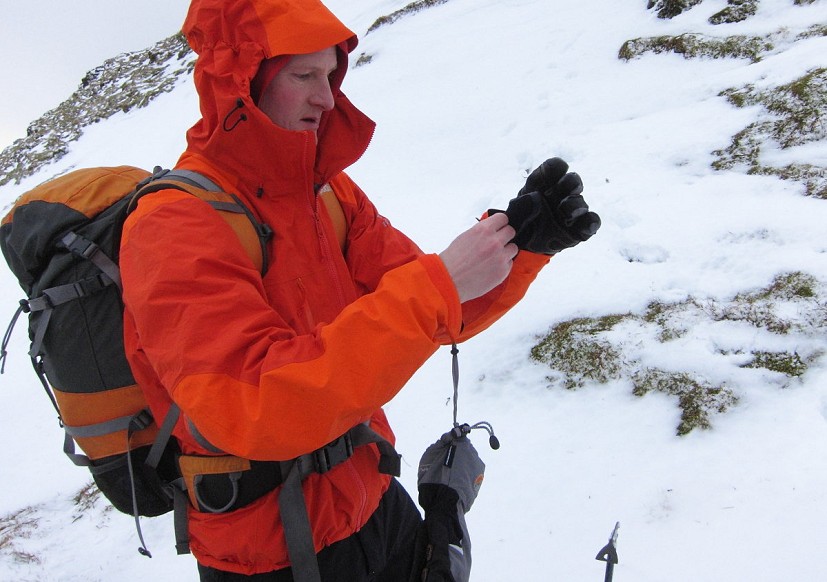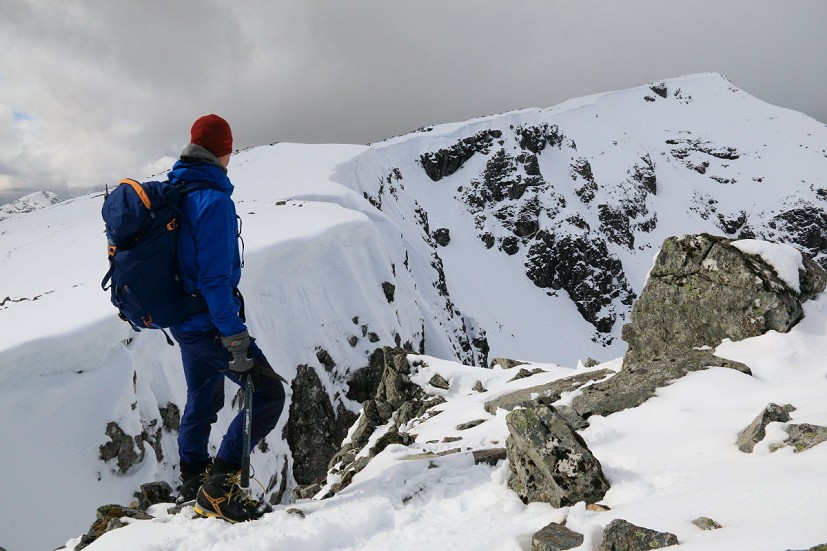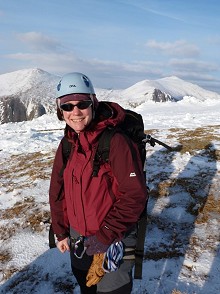Winter Walkers' MOT - Get Set for the Cold Season
We all love getting out in winter conditions: the crisp, cold silence; the crystal clear views; the exhilaration of cold breath entering your lungs; the crunch of white sparkles under your boots. But winter is a serious season on the hills, and if you get things wrong circumstances can go downhill on a spectacular scale. Out on a mountainside in a blizzard is not the place to realise that your winter kit is not adequate. So get set before you leave home. Give your gear, clothing and skills a winter MOT with these essential tips.
Pack a Blizzard Bag and a group shelter. If something unforseen happens and you find yourself immobilised in a winter storm far from shelter, the result could be fatal. Therefore you need to carry some form of emergency shelter with you. Warmer than simple plastic survival bags and way more effective than foil emergency blankets, Blizzard Bags comprise several layers of foil stuck together and work by trapping air and acting as a vapour barrier so that although you might be wet and cold, the wet air doesn't then escape causing even more loss of latent heat by evaporation. One lives in my sack all year round, but in winter it should be glued in there so that I never leave for the mountains without it. Many rescue teams carry them and they are proven to be incredibly successful at helping to rewarm casualties and prevent further heat loss. In addition a group shelter is a must for winter, providing vital wind-and-weather protection, and the ability to pool everyone's body heat in the event of an accident (or even just when stopping for lunch).
Register your phone with the 999 service. This facility has been available for a few years, but there are still mountaineers and walkers who are unaware of it.
We've all been in locations where mobile phones have only one bar of reception, or keep dropping in and out of signal making it impossible to hold a conversation. Or perhaps the wind is simply so noisy that you cannot hear the other person speak! Either could be a serious problem if you need to phone for help. Where a phone conversation may be impossible, there's a chance that a text could still get through. However you cannot just text for help to 999; you have to be registered in the system first.
In order to register your phone text the word register to 999. You will receive a text back which asks if you agree to the terms and conditions and not to abuse the service and asking you to reply yes or no. Text yes and you will receive a second text informing that your phone is now registered. Simples! Several mountain rescue callouts have been generated by this service.
Always carry at least one spare map. It is only too easy to lose a map if it is windy and you are not used to wearing bulky winter gloves. Use laminated maps! Paper maps tear when being folded into map cases, they disintegrate and turn to papier-mch in the wet and map cases act as excellent garrottes in high winds. If you buy laminated maps from the right websites they can be as cheap as paper maps.
Alternatively print out your own map extracts from the computer and laminate. (Do make sure though that you do write on the grid line numbers and the scale is correct. This could be crucial!!) This means smaller maps to handle which can fit more easily into a pocket and just shows the relevant areas for your walk.
Other great maps are Yellow Publications 1:16,000 OS maps: These are waterproof, larger scale and show more detail.
In addition to (and definitely not instead of) a paper map, having the relevant OS map tile on your smartphone is a sensible belt-and-braces backup - though don't put all your eggs in this one technological basket!
Fit snow baskets to your pole tips. Walking in deep snow is arduous, and a pair of poles can make all the difference. Swap your small summer baskets for wider winter ones in order to help stop your pole tips sinking into soft snowdrifts.
Check that your winter boots fit properly. Having boots that are too small in summer may just result in discomfort or blisters. In winter small boots are a much more serious consideration. They constrict your feet which results in them being cold and in the worst case scenario can also lead to frostbite. Do not presume that just because your boots fitted fine last winter, they will still fit well. Peoples feet can spread after several years of walking, so the boots that fitted you fine last winter may no longer be big enough for your feet.
Make sure your crampons have been fitted to your boots before you head out for your first winter sortie. If you have swapped old boots for a new flash shiny pair for the new season, then your crampons will need to be fitted to them too. This should be done in the comfort of your living room, not in a hoolie, perched on a steep, slippery slope where you have just realised that you need more grip on the bottom of your boots.
And carry a crampon repair kit. Even though it is relatively rare for straps to break or metal to give, it can happen and this could be disastrous! My crampon repair kit consists of a few pieces of tough wire to fashion into a bale with a set of pliers, cable ties of different sizes and gaffer tape.
Charge your batteries. Cold weather is hard on batteries and, to state the obvious, it gets dark early at this time of year. Two reasons, therefore, for making double sure that the batteries of essential gadgets such as headtorches and phones are fully charged before leaving home.
Dig out the ski goggles. Whether it's a full-on blizzard or simply spindrift carried in the wind, blowing snow stings your eyes and can make it all but impossible to see. Since you can never guarantee the weather, goggles are a winter must-have which should sit in your bag from the moment the snow hits the hills.
Minimise the faff factor. Keep anything you may need readily available. For example, carry a compass in a jacket pocket (attached to a fastener), gloves in your pocket, spare jacket near the top of your sack, food in the top pocket of the rucksack. Think about how you attach your ice axe to your rucksack. Can you grab it without needing to take your rucksack off each time?
Pack spares, spare spares and more spares. In winter it is easy to lose small items of clothing in the wind. Indeed Scottish winters are renowned for their windy conditions. The loss of gloves and hats in summer may mean discomfort, but in winter it could be the difference between frostbite or even life and death if you are not able to hold an ice axe or use a map and compass. Ideally have at least two spare sets of mitts or bulky gloves, not just in case you lose your gloves but because gloves can get soaked in the snow and lose their insulating properties. I also back this up with thin thermal gloves so that if I have to remove my main gloves, my hands still have some protection especially when doing fiddly tasks; frostbite can occur within two minutes of exposure in severe windchill. We can lose up to seventy percent of our body heat through our head so again a spare hat is a must. Last but by no means least, bring a spare headtorch to back up your main light. After all, when it comes to someting as basic as being able to see at night on tricky and potentially dangerous terrain, having 100% redundancy in terms of torches is not overkill - it's just common sense.
Attachment points. This goes back to the wind and steep slippery slopes. It is easy to lose gloves, or drop compasses if your gloves are iced up. If they do not come with lanywards it is worth sewing elastic wrist loops onto your gloves so that if you have to take them off, they are still attached to your person. Compasses come with cord and this can be attached to a zip pull or part of your rucksack with a small karabiner.
Go up a size! A summer rucksack of around 30 litres is simply not large enough to carry all the extra kit for winter. With spare gloves, hats, insulated jacket, food, etc etc you are likely to struggle to get all you need into anything less than a 40-45 litre sack. Likewise a nicely fitting womens waterproof jacket (I choose women here as so many womens' jackets come fitted for the female form) is not good for getting extra layers under. I generally go up a size for my waterproofs in winter. In winter, layers are more bulky after all, and you may well be wearing more of them.
Learn the skills. If you are new to this game then it may be worth getting booked in on a winter skills course. These teach you how to choose and use specific winter equipment such as ice axes and crampons. They also give you the basics of avalanche awareness (what signs should you be looking for) and what homework, yes, homework, you should have carried out before heading onto those snowy slopes! Instruction is not a substitute for winter experience of your own, but it can certainly be a solid foundation for it.
For more on the core winter techniques these articles are a good place to start:
Ten Serious Mistakes Winter Walkers Make
Essential Winter Skills: Walking With an Ice Axe
Essential Winter Skills: Walking in Crampons
Essential Winter Skills: Ice Axe Self Arrest
Navigation in Poor Visibility: The Essentials
About Helen Howe
Helen runs Snowdonia First Aid with her husband Steve.
Each have over twenty years of Scottish winters and are qualified Winter and International Mountain Leaders. They run Outdoor First Aid courses and Mountain Leader Training and Assessments as well as mountain and hill skills courses. This winter Helen and Steve are running Winter Skills courses both in Snowdonia and Scotland.
Helen is also a qualified Mountain Rescue Dog handler who has trained three SARDA dogs. Both she and Steve are active members of Llanberis Mountain Rescue Team and have served on the Medical and Training Sub committees running some of the team's winter training.
